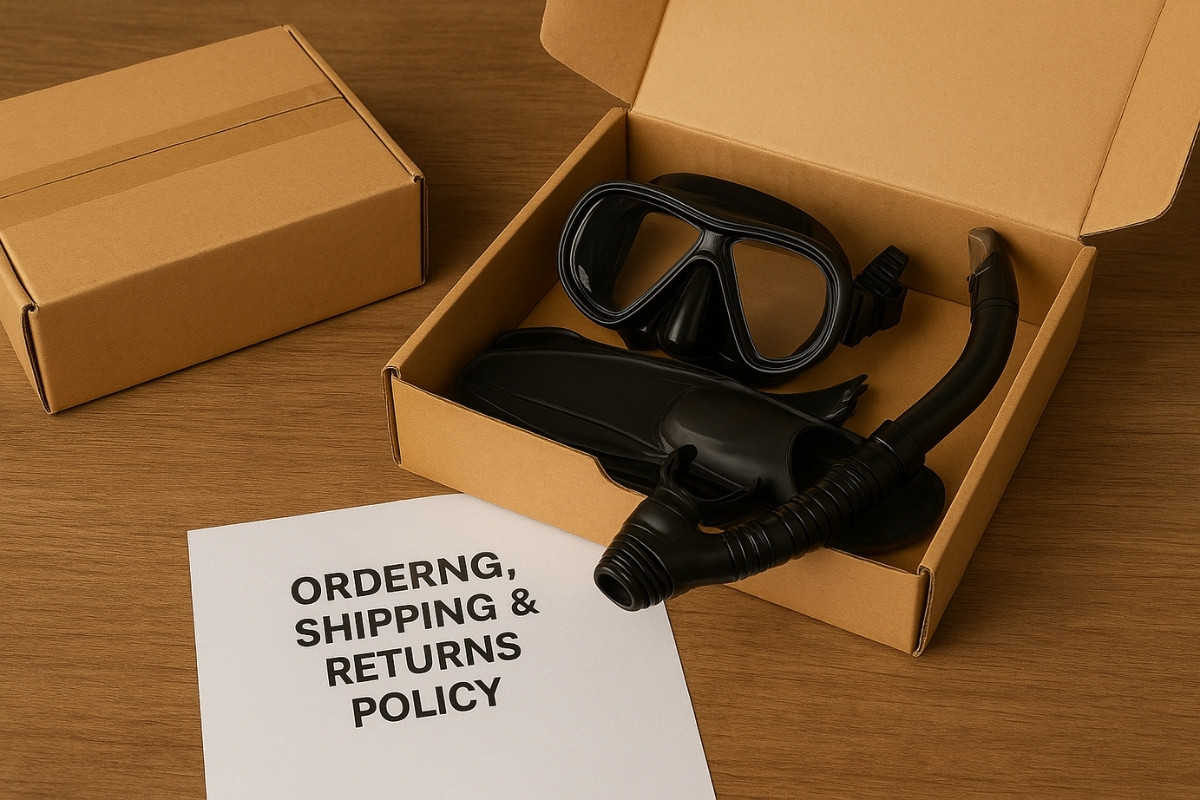- Overview of Ordering, Shipping & Returns Policy
- Shipping Options and Costs
- In-Store Pickup Options
- Returns Policy Overview
- Handling Returns and Refunds
- Shipping Restrictions and Conditions
- Customer Loyalty Benefits
- Best Practices for Shipping and Returns
- Frequently Asked Questions
- Navigating Retail Policies with Confidence
Overview of Ordering, Shipping & Returns Policy
When shopping online or in-store, having a clear understanding of ordering, shipping, and returns policies can make all the difference in your customer experience. These policies serve as your roadmap for making purchases, understanding delivery expectations, and knowing your options if something doesn’t work out as planned.
Introduction to the Policy
Modern retail policies have evolved to become more customer-friendly and transparent than ever before. Today’s ordering, shipping, and returns frameworks are designed to provide flexibility while protecting both customers and retailers. These comprehensive guidelines cover everything from initial purchase through final delivery, and even extend to post-purchase scenarios where returns or exchanges might be necessary.
Importance of Clear Policies for Customers
Clear policies eliminate guesswork and reduce anxiety around online purchases. When you know exactly what to expect regarding delivery times, shipping costs, and return windows, you can make more confident buying decisions. Transparent policies also help set realistic expectations, preventing disappointment and building trust between you and the retailer.
Key Terms Explained
Understanding common policy terminology helps you navigate the fine print more effectively. Terms like “business days” typically exclude weekends and holidays, while “processing time” refers to the period before your order ships. “Restocking fees” might apply to certain returns, and “final sale” items usually cannot be returned at all.
How to Navigate the Policy Section
Most retailers organize their policies into logical sections covering ordering, shipping, and returns separately. Look for clearly marked headings and use the search function if available. Pay special attention to timeframes, exclusions, and any special conditions that might apply to your specific situation.
Customer Support Contact Information
Always locate customer service contact details before making a purchase. This information typically includes phone numbers, email addresses, live chat options, and business hours. Having this information readily available can save time if questions arise about your order or if you need assistance with returns.
Shipping Options and Costs
Understanding your shipping choices helps you balance cost with convenience. Most retailers offer multiple shipping tiers to accommodate different needs and budgets, from economical standard shipping to premium expedited services.
Standard Shipping Details
Standard shipping typically takes 5-7 business days and often becomes free once you reach a minimum order threshold, commonly around $89. This option works well for non-urgent purchases and helps keep overall costs down. Standard shipping usually covers the continental United States, though some retailers extend this to Alaska and Hawaii with additional surcharges.
Expedited Shipping Services
When you need items quickly, expedited options like two-day or next-day shipping provide faster delivery for an additional fee. These services often have specific cutoff times, usually around 1 PM or 2 PM, to guarantee delivery within the promised timeframe. Weekend and holiday schedules may affect these services, so check availability during peak shopping periods.
International Shipping Limitations
Many retailers have scaled back international shipping due to complexity and costs. Some companies no longer ship outside the United States, while others maintain limited international services with significant restrictions. Always verify international shipping availability before placing orders if you’re shipping outside the U.S.
Special Shipping Cases (e.g. Alaska, Hawaii)
Remote locations often incur additional shipping surcharges due to transportation costs. Alaska, Hawaii, Puerto Rico, and other territories frequently fall into this category. These surcharges typically range from $9.95 to $19.95 depending on the retailer and can apply even when standard shipping would otherwise be free. For more details about payment options that might help offset these costs, check information on payment methods.
In-Store Pickup Options
In-store pickup combines online shopping convenience with immediate gratification. This service has grown increasingly popular as retailers expand their omnichannel capabilities.
Same-Day Pickup Services
Same-day pickup allows you to order online and collect your items within hours. This service typically requires orders to be placed before a specific cutoff time, often around noon. Same-day pickup works particularly well for last-minute gifts or when you want to avoid shipping costs entirely.
Shipping to Store for Pickup
Ship-to-store services let you have items delivered to a retail location for later pickup. This option often extends your pickup window compared to same-day services and can be especially useful if you’re not available for home delivery. Items usually arrive within the standard shipping timeframe and are held for pickup for a specified period.
Benefits of In-Store Pickup
In-store pickup eliminates shipping costs, reduces delivery delays, and provides opportunities to examine items before taking them home. You also avoid package theft concerns and can easily handle returns or exchanges during the same visit. Many customers appreciate the flexibility of picking up orders at their convenience during store hours.
Instructions for In-Store Pickup
The pickup process typically involves bringing your order confirmation and valid ID to the designated pickup area. Some retailers send notification emails or texts when orders are ready for collection. Store associates will verify your identity and order details before releasing items. To find convenient pickup locations, consult store locations and hours information.
Returns Policy Overview
Return policies provide the safety net that makes online shopping less risky. Understanding these policies helps you shop with confidence, knowing you have recourse if items don’t meet expectations.
Return Timeframes for Online Purchases
Online purchases typically enjoy longer return windows than in-store purchases, often 40 days from delivery date. This extended timeframe accounts for shipping delays and gives you adequate time to evaluate your purchase. The return period usually begins when you receive the item, not when you place the order.
Return Timeframes for In-Store Purchases
In-store purchases commonly have shorter return windows, typically 30 days from the purchase date. This difference reflects the immediate nature of in-store shopping, where you can examine items before buying. Keep your receipt as proof of purchase date, as this determines your return eligibility.
Prepaid Return Labels
Many retailers provide prepaid return labels, making the return process more convenient. These labels are often included with your original shipment or can be generated online through your account. Prepaid labels eliminate the need to pay return shipping costs upfront, though some retailers may deduct return shipping from your refund.
Non-Returnable Items
Certain items cannot be returned due to hygiene, safety, or practical reasons. Beauty products, undergarments, swimwear, and final sale items commonly fall into this category. Digital products, gift cards, and personalized items are also typically non-returnable. Always check return eligibility before purchasing these types of items.
Handling Returns and Refunds
The returns process can seem daunting, but most retailers have streamlined procedures to make returns as painless as possible. Understanding each step helps ensure smooth transactions.
Process for Returning Items
Start by logging into your account or locating your order confirmation. Most retailers offer online return initiation, where you can select items to return and specify reasons. Print the provided return label, package items securely with original tags and packaging when possible, and drop off at the designated carrier or schedule pickup.
Refund Processing Times
Refunds typically process within 5-10 business days after the retailer receives your return. Credit card refunds may take additional time to appear on your statement, depending on your card issuer’s processing schedule. Original payment methods are usually required for refunds, though some retailers offer store credit options for faster processing.
Partial Refunds for Late Returns
Returns submitted after the standard return window may still be accepted but could result in partial refunds. Late return policies vary by retailer, with some offering prorated refunds based on how late the return is submitted. This policy encourages timely returns while still providing some recourse for customers who miss deadlines.
Final Sale Policies
Final sale items are typically marked clearly during purchase and cannot be returned under any circumstances. These items are often deeply discounted clearance merchandise or seasonal items. Final sale policies help retailers move inventory while offering customers significant savings in exchange for accepting the no-return condition.
Shipping Restrictions and Conditions
Various regulations and practical considerations create shipping restrictions that affect what can be sent where. Understanding these limitations helps avoid ordering issues and delays.
Restrictions on Beauty Products
Beauty products containing alcohol, aerosols, or other regulated substances face shipping restrictions. These items may not ship to certain states or require ground transportation only. International shipping of beauty products is often prohibited entirely due to varying regulations across countries.
Hazardous Material Shipping Regulations
Items classified as hazardous materials, including certain cleaning products, batteries, and aerosols, must follow strict shipping protocols. These restrictions may limit shipping methods, increase costs, or prevent shipping to certain locations entirely. Carriers have specific guidelines for hazardous materials that retailers must follow.
Shipping Surcharges Explained
Additional fees may apply for oversized items, heavy packages, or deliveries to remote locations. These surcharges help cover the extra costs associated with special handling or transportation to difficult-to-reach areas. Surcharges are typically disclosed during checkout before you complete your purchase.
Eligibility for Free Shipping
Free shipping thresholds encourage larger orders while helping retailers manage shipping costs. These minimums vary by retailer but commonly range from $35 to $100. Some items may be excluded from free shipping calculations, particularly oversized or heavy items that incur additional handling costs.
Customer Loyalty Benefits
Loyalty programs reward repeat customers with enhanced shipping and return benefits. These programs create value for frequent shoppers while encouraging continued patronage.
Nordy Club Member Benefits
Loyalty program members often enjoy perks like free shipping regardless of order size, extended return windows, and early access to sales. Higher-tier members may receive additional benefits such as free alterations, personal styling services, or exclusive events. These programs typically have multiple tiers based on annual spending levels.
Free Shipping for Loyalty Members
Premium loyalty members frequently receive free shipping on all orders, eliminating minimum purchase requirements. This benefit can provide significant savings for frequent shoppers who make smaller, regular purchases. Some programs also offer free expedited shipping upgrades for top-tier members.
Incentives for Returning Customers
Returning customers may receive special promotions, bonus points, or exclusive discounts. These incentives help build long-term relationships and encourage repeat business. Some retailers track purchase history to offer personalized recommendations and targeted promotions based on past buying behavior.
Exclusive Promotions and Offers
Loyalty members often get first access to sales, special events, and limited-time offers. These exclusive opportunities can include early access to seasonal sales, member-only pricing, or invitations to special shopping events. For additional benefits and services, explore gear warranty and repair services available to members.
Best Practices for Shipping and Returns
Learning from successful retailers can help you understand what makes effective shipping and returns policies. These best practices create positive customer experiences while managing business costs.
Learning from Major Retailers
Leading retailers like Nike, Target, and Walmart have refined their policies through years of customer feedback and operational experience. They typically offer clear, easy-to-find policy information, multiple shipping options, and generous return windows. These companies also invest heavily in logistics infrastructure to deliver on their policy promises consistently.
Creating Transparent Policies
Effective policies use plain language and avoid confusing jargon. They clearly state timeframes, costs, and conditions without hiding important details in fine print. Transparency builds trust and reduces customer service inquiries by answering common questions upfront.
Communicating Shipping Options Effectively
Clear communication includes displaying shipping costs and delivery estimates prominently during checkout. Effective retailers also send proactive updates about order status, shipping delays, and delivery confirmations. This communication helps manage expectations and reduces anxiety about order status.
Building Customer Trust through Clear Policies
Trust develops when policies are fair, clearly communicated, and consistently applied. Retailers that stand behind their policies and handle exceptions gracefully build stronger customer relationships. For businesses looking to enhance their policies further, consider group and wholesale inquiries to understand bulk customer needs and expectations.
Frequently Asked Questions
What is the typical return window for online purchases?
Online purchases usually have a return window of about 40 days from the delivery date.
How can I initiate a return?
You can initiate a return by logging into your account or locating your order confirmation on the retailer’s website and following the provided instructions.
What should I check before purchasing items with return restrictions?
Always check the return eligibility for specific items, especially beauty products, undergarments, and final sale items, as these often cannot be returned.
What are common shipping options available to customers?
Common shipping options include standard shipping, expedited services, and in-store pickup.
How do loyalty programs enhance shopping experience?
Loyalty programs often offer perks like free shipping, extended return windows, and exclusive promotions, rewarding repeat customers.
Navigating Retail Policies with Confidence
Understanding the intricacies of ordering, shipping, and returns policies empowers customers to shop with assurance and clarity. By familiarizing yourself with these guidelines and leveraging retailer support, you can enhance your shopping experience and minimize potential challenges.




